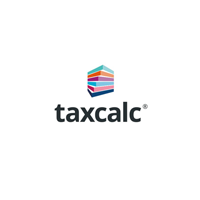Business
Succession Planning
While the business journey is still on, it is not unusual for a business owner to decide that it’s time to take a back seat and let the next generation take over the role he has successfully run for so many years. This process called succession planning is not as simple as it may seem as passing on the role to the next generation and identifying as to who will be the most fit-out of several choices to succeed in one or several positions require good judgment, understanding, and a lot of decision making.
Business succession planning is concerned with the planning to pass on leadership roles; certainly the ownership of the business. Business succession planning, in simpler terms, is to figure out who will take charge of the business upon retirement, death, or in the case of inability to precisely control or manage the affairs of the business. As the main player decides to opt-out of the business, taking an exit route, the strategic planning process kicks in with the ultimate objective of identifying and developing a future leader/leaders of the business.
This may not only include the top panel but also people working across major roles at all levels of management. Business succession planning ensures that the business continues to run efficiently after the company’s most influential people move on to new business opportunities, retire or die. It also prepares businesses for uncertainties and uplifts high-potential employees, to advancement.
Succession planning may also serve as a valuable tool to deal with unforeseen and unexpected scenarios at times. Effective and timely succession planning can also pave the way for the continuity of the business, so it plays a critical role in the business’s strategic planning. Succession planning is crucial and especially a matter of great importance for small to medium-sized businesses and family-owned businesses. The aim is to favor every stakeholder, be it the departing owner, the successor, or the employees. This process of succession planning involves taking a series of steps to reach the goal.


Get your Business
Right up there!
Making business succession arrangements at an early stage by the business owners allows a smooth transition and lessen the negative effects of their withdrawal.
Even after deciding to leave the business, owners continue to work with the new leaders for some time as they continue to develop the confidence of managing their new role, business, and of the management team before handover the reigns of the business to their successors.
Generally, when the business owners get near to the retirement age, the need for a succession plan almost becomes inevitable to ensure that the business runs as smoothly as possible without any significant hiccups. The need for having a sound and solid succession plan in place increases with the complexity of the business operations, assets size, number of employees, branches, business locations, and customer base as all require a smooth transition of the business and therefore the increased importance of succession planning.
Creating a Business
Succession Plan
A succession plan may have several facets depending upon the time of exit involved. Before strategizing to create a comprehensive and effective business succession plan, there are some critical steps to look into before strategizing. The succession plan may involve different scenarios in which the ownership of a business may be transferred eventually depending on the owner’s will and to a specific scale on the type of business. The owners may decide to sell their shares to another shareholder or partner, a third party, an existing employee, or pass ownership to a family member or a legal heir.
Selling the business to an
Existing shareholder/partner
If passing on the business as part of the inheritance is not the best option for a business owner managing a company or a partnership, the share in the business can be sold out to the co-owner or the partner. Many arrangements both in a company conduit and in partnership state that the share of the existing owner in case of his death or incapacitation will pass on to the other shareholders/partners who will have an option to acquire the business share the passing away or leaving owner/partner.
This type of succession plan ensures a smooth transition of business in case of an unexpected event and evens out the uncertainty created if such a plan is not in place or does not exist.
The family members may be interested in retaining the share in the business but simply they may not possess the right skill and expertise, experience, or time to serve the business needs. Such as buy-sell agreements ease their burden. This agreement also ensures that the family members are given enough compensation for their business share.
Disclaimer
Selling the business to a
Third-party
When there is no obvious successor to the business, the owners are left with limited options; the best one may be to sell the business to an outside interested third party. To ensure that adequate compensation is paid by the new owners a proper valuation of the business and updating it frequently may be required till the business is sold out.
Both the selling process and the business valuation may be a complex process and involve using the services of a professional valuator or it may need to be outsourced to such business brokers who are well versed and experienced in the art of selling and buying related businesses. If a business owner is considering this option though a bit costly it may result in improving the business worth.
Selling the business to an
Existing employee
As in the case of selling the business to co-owners or to a partner, passing on the business through a buy-sell agreement to a key employee also requires succession planning. Such as option may arise when there is no co-owner or a family member to take the place of the owner or the partner.
A key employee may be the right successor in this scenario. A senior employee is in an excellent position to maintain the quality of business, especially if the leaving owner is conscious about maintaining the quality of business after retirement or death. The key employee can prove to be more reliable than a third party. A business owner can explore, identify, and look towards a senior staff member and put an action plan to train such an employee who might be ready by the time of the retirement to hold the position afterward. Similar arrangements may also exist in case of death or inability of a business owner to manage the business.
While the key employee may be willing to buy the business at an adequately evaluated price at predetermined retirement date, the most common problem associated with selling the business to an employee is that most employees don’t have enough liquid funds to buy the business they are currently working for. A solution to this problem is seller financing, in which the buyer pays back the original owner over time with some down payment and monthly or quarterly payments with interest. The negotiated terms and conditions are normally laid down in the succession plan.
Transferring ownership
to a family member/heir
Transferring the ownership to a family member or legal heir is the most common and attractive option for providing a leadership and owner role to one or more of the family members/ legal heirs to run and manage a successful and operational business.
The decision to transfer ownership to a single member of the family or a legal heir may seem to be simple. Still, it may get complex if multiple family members/legal heirs are involved in the process of taking over the business. Transferring the ownership to a family member or legal heir is particularly popular where the family members/legal heirs are already working in the business.
If the owners are considering this business succession via this route, following steps to be implemented smoothly failing may lead to a disordered transition.
- Identify the timeline as to when the succession plan will take into effect, on a selected date, or in case of death or disability.
- Identify clearly who will be the family member who will own the business, its valuation and how would the other heirs, if any, be compensated for the share in the business
- Nominating a successor as one of the family members or a key employee in advance will formalize the transition. Consider more than one as the potential candidate before making a final selection.
- A buy-sell agreement may be required for such family members who want to sell their share of the business to the taking over family members/ legal heirs -because either they are not interested in the business ownership/partnership, or they are not in a position to take an active part in the business operations.
- Carry out the business valuation and once the business’ value is calculated, if need be it should be updated regularly.
- If multiple family members/ heirs are vying to become the potential owner but only one can take over the business, it needs to be clearly outlined and instructed as to who will be the future leader of the business. Failure to lay this structure clearly and explicitly can negatively impact the business as each family member/ legal heir may incorrectly assume their authority over business matters.
- Document the standard operating procedures regarding the succession planning process, identify critical business operations, recurring meetings or processes and organizational charts, etc. moving towards handing over the leadership role.
Depending on the complexity of the succession planning process, the owners may either choose to make a succession plan themselves or they can seek professional services to do so.
Care Accountancy can help you in determining the best succession planning option for your business and can assist in formulating a plan to choose the next leader, business valuation, and documentation of the process. If you need to move towards the succession planning process, please call us at our number at 0113 887 0218 or drop us an email at info@careaccountancy.co.uk for advice.

Get in Touch
Rhoundhay
Leeds
LS8 2AL, UK
Coventry Road
Birmingham
B26 3EJ, UK
0121 7268 542
info@careaccountancy.co.uk











